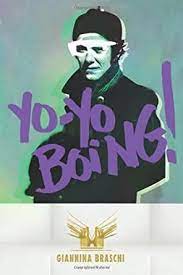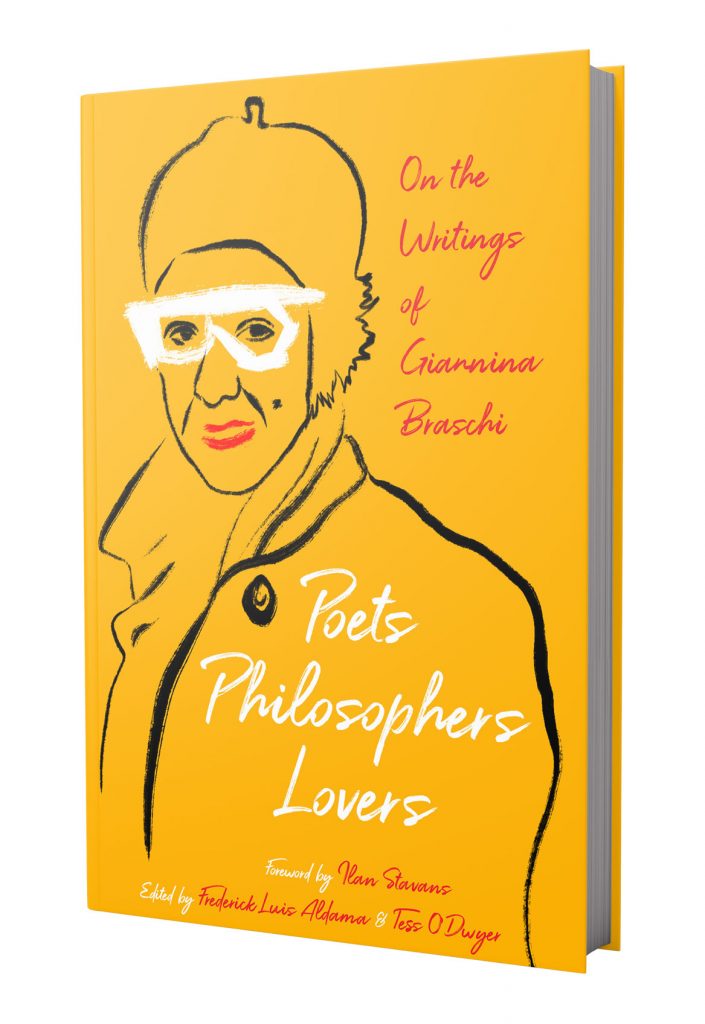
Translanguaging in literature is the subject of Francisco Moreno-Fernández’s essay “Yo-Yo Boing! Or Literature as a Translingual Practice.”
Yo-Yo Boing! Or Literature as a Translingual Practice
By Francisco Moreno-Fernández
What Is Translanguaging?
Why don’t bilingual children react when they are instructed to “translate”? Or why, when we move about in bilingual environments, do we lose consciousness of the language we are reading, or the one we are hearing, or even the one we are speaking (about)?
To understand why processes of this kind occur, resorting to the concept of “bilingualism” does not seem sufficient. This is why since the 1990s, there have been discussions concerning translanguaging, a term that was coined by Cen Williams (applied in Welsh as trawsieithu) in his unpublished thesis titled “An Evaluation of Teaching and Learning Methods in the Context of Bilingual Secondary Education.” However, the actual dissemination and consolidation of the term, and of the re- lated concept, have only gained traction over the past five years, thanks mostly to Ofelia García (García and Wei).
Translanguaging is the process by which multilingual speakers use their languages as an integrated communication system. It is a dynamic process in which multilingual users perform complex social and cognitive activities through the strategic use of multiple semiotic resources in order to act, know, and be. Translanguaging presupposes that, beyond mere linguistic production, the use of the language also involves effective communication, the functions of the language, and the processes of thought. Translanguaging is characterized by the unintentional integration of linguistic systems, becoming an interpretive alternative to the concept of bilingualism, which would be seen more as a “double mono-lingualism” or as an alternation between languages. From this perspective, the mono/multi and uni/pluri binaries would lead to a reductionist interpretation of communication and competence.

The prefix “trans” denotes that these are fluid practices, which go beyond (i.e., transcend) the systems and structures of socially construct- ed language, thereby involving different meaning-generating systems. Translingual practices have a transforming capacity that affects not only linguistic systems but also the cognition and social structures of the individual. This conception has transdisciplinary consequences, which lead to a reconceptualization of language, language learning, and the use of languages in the fields of linguistics, psychology, sociology, and edu- cation (García and Wei). Translanguaging is manifested in writing, the writing acts of the bilingual individual (Horner, Lu, Royster, and Trim- bur), in literacy studies (cross-cultural literacy, multi-literacy, heterography), in sociolinguistics (multilingualism, fragmented multilingualism), and in applied linguistics (dynamic bilingualism). I propose that these transdisciplinary consequences and this reconceptualization of the use of language also affect literary creation.
The use of the prefix “trans,” on the other hand, situates us on a plane where it is possible to understand or interpret globalization, superdiversity (Vertovec), and globalized contexts, such as those experienced in large cities or among groups of speakers in open connection with multiple international referents. Hence, theories of translanguaging can be readily linked to Alastair Pennycook’s theories of globalization in his work titled Global Englishes and Transcultural Flows. Pennycook interprets global- ization as a multivocal and diverse phenomenon, in which any analysis cannot be approached from static positions but only through transversal standpoints. This is why he resorts to terms such as “transdisciplinary,” “transcultural,” “transtextual,” “translocal,” or “transidiomatic”; and it is also why he pays special attention to hip-hop as a worldwide phenomenon, as a reference for a transmodal semiotics incorporating music, writ- ing, dress, dance. Pennycook focuses on the local manifestations arising within and as a result of globalization, as a counterpoint that both ex- plains and complements it.
All of this fits perfectly into a translingual paradigm, the characteristics of which have been outlined by Suresh Canagarajah:
Languages are always in contact and influence each other.
Speakers treat all available languages as codes of a single repertoire in their daily communication, not as codes separated by labels. Speakers do not have separate competences, but an integrated skill. Languages are not necessarily at war with one another but complement each other in communication.
Texts and speech form a whole mediated by different codes.
In context, negotiations are common practices.
Languages are always open to negotiation and reconstruction. Communicative norms are relocalized.
Languages are mobile resources that adapt to each purpose.
Semiotic resources are involved in a physical and social environment, aligned with contextual factors (participants, human body, scenario).
The Liquidity of Yo-Yo Boing!
The characterization of Braschi’s work as liquid (Bauman) interests me since I see it as being perfectly complementary to its interpretation as translingual. In this characterization, I prefer to define the content of Yo-Yo Boing! as being liquid and its linguistic form as being translingual. When I speak of “liquid,” I mean the fluidity between disparate elements that are contrary or contradictory within the work. Thus, the constant, fluid, liquid movement between the sublime and the vulgar, dream and reality, tenderness and violence, eroticism and eschatology, the spiritual and the physical, the cultured and the popular, and the autobiographical and the fictitious. Or, more important, between the universal, the general, and the local. This would explain the manipulation of all manner of universal cultural references (literature, film, art) in tandem with social issues such as the discrimination against Hispanics in the United States, as well as local manifestations—or rather, relocalized manifestations—in the form, for example, of dialectalisms, and of specific Puerto Rican cultural references (dar pon, vejigantes, chinas; ¡Ay, bendito!), all of which express the indexicality of Braschi’s literary language.
Translanguaging in Literature

The liquidity of Giannina Braschi’s work can be clearly seen in the importance the author gives to movement. Yo-Yo Boing! is a work filled with movement; movement that is internal and external, physical, and sometimes without a reference invoked to any specific type of movement:
Y por qué ahora—y no antes—soy yo la que ahora y no antes tiene razón en inculparse; por donde estoy ahora no recuerdo haber estado nunca y por eso vuelvo a pasar a ver si lo reconozco o si me lo aprendo de memoria o si lo olvido alucinando con la memoria a cuestas. Yo soy la que soy sin ser quien fui. (196, 197)
Y por qué ahora—y no antes—soy yo la que ahora y no antes tiene razón en inculparse . . . por donde estoy ahora no recuerdo haber estado nunca y por eso vuelvo a pasar a ver si lo reconozco o si me lo aprendo de memoria o si lo olvido alucinando con la memoria a cuestas. Yo soy la que soy sin ser quien fui. (196, 197)
Estar haciendo sin estar en un ser que no soy yo y que no me conoce porque ya no me habita, se ha ido de mí, me ha dicho adiós tantas veces—y con tanta premura, y con tanta desilusión en sus alas—como si lo inculpara el estar siendo sin mí. (203)
Por eso me estoy yendo desde hace tiempo a donde el irse es lo único cierto que me llama la atención, el irse lejos de aquí, el nunca más estar aquí, donde yo nací, donde yo crecí, donde yo me reproduje. (202)
Cuando hablo me estoy yendo de un barco. . . . Lo importante es que ninguno tenga una frontera—que no sepamos por dónde vamos pero que vayamos siempre a donde vayamos vayámonos de todos—y de nadie—a nadie consideremos tan importante para no partir en este viaje que nos lleva—adiós—hacia fronteras insospechadas—donde la frontera es la única sospecha que sospecha—porque no hay sospechosos a bordo de la frontera que nos afronta. (202)
In this last example, we find another key to understanding the liquidity of Braschi’s work: the word “frontera” (frontier/border/boundary). This liquidity finds its ideal habitat in border situations, be they cultural, social, linguistic, environmental, or personal. The reality presented by Braschi could be better defined through the form adopted by the frontier—by her own frontier(s)—than through the features of each of the realities with which this frontier comes into contact. To better understand this idea, I suggest we refer to Walter Benjamin’s reflections on color. For Benjamin, a color cannot be defined or described by its intrinsic characteristics but, rather, by the way it contrasts with adjacent colors; this contrast occurs precisely at the edge of surfaces—at the border. A blue surface is not appreciated in the same way if it borders a black surface as if it abuts a green surface. It is the border/boundary that gives us the key to understanding why things look the way they look and are the way they are.
This notion of frontier, border, or boundary, applicable to a situation of contact, is not exclusive to the realm of philosophical reflection. The notion has also been employed as a fundamental term in socio-ethnic and ethnographic studies. Parallel to the observations made by Benjamin, in 1969 Fredrik Barth, for example, stated that “the ethnic boundary . . . defines the group, not the cultural stuff that it encloses” (15). Al- though we speak of social boundaries, there may be actual geographical correspondences for such boundaries. Ethnic groups are not necessarily based on the occupation of exclusive territories or on an initial ascription but, rather, are based on ongoing expression and validation. The ethnic border channels social life and gives rise to a complex and conflicting organization of behaviors and social relations. This is exactly what we have observed in Braschi.
Giannina Braschi is quite aware of the existence and importance of this border; and even if she weren’t, it would be of little consequence because it is evident that she somehow appreciates and lives that bor- der. And this evidence is obtained from many elements of content and thought expressed in Yo-Yo Boing!—particularly in its metalinguistic awareness, or epilinguistic awareness, as French linguistics might de- scribe it (Gombert). This awareness emerges when the author states literally that “somos bilingües” (YYB 167); when she speaks of “barreras lingüísticas” (12); when she resorts to pseudo phonetic writing to represent colloquialisms, in Spanish or English; when she discusses improving her pronunciation; or when she has a character say: “I know five words in Spanish: coño, pendejo, puta, maricón, carajo” (127). And, certainly, this epilinguistic awareness is apparent in the constant language games and in the way in which she so often plays with this translingual reality and with all the factors with which it contrasts and among which it moves so liquidly…
To read the complete essay by Francisco Moreno on translanguaging in literature, please click here to Yo-Yo Boing! Or Literature as a Translingual Practice.
